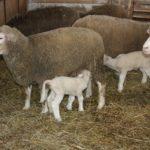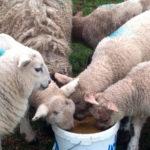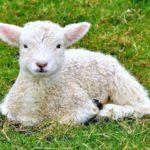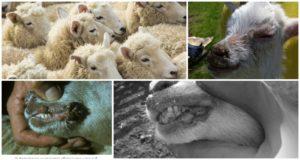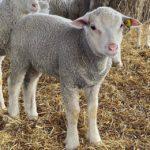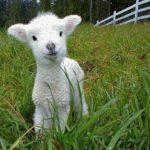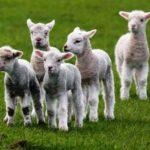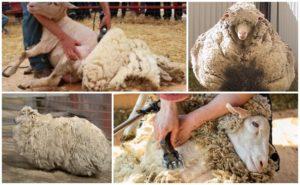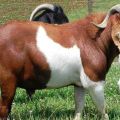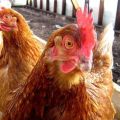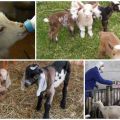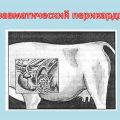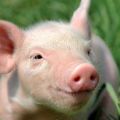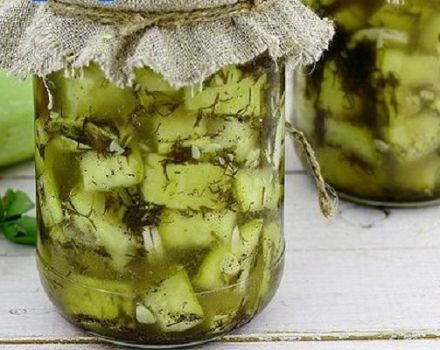How to treat and why diarrhea occurs in lambs, what to do and what can be given
Sheep are often faced with a variety of diseases that can damage the digestive organs. At the same time, general weakness, diarrhea and other symptoms appear. Farmers are especially concerned if these signs develop in their young. Therefore, the question of how to treat diarrhea in lambs is considered very relevant. To cope with this problem, it is important to get the correct diagnosis first.
Causes of diarrhea in lambs
Digestive disorders can be associated with a variety of factors. Sometimes even experienced farmers cannot determine the causes of problems. In such a situation, it is impossible to do without the help of a veterinarian.
Anaerobic dysentery
This term refers to an acute toxic infection that infants are susceptible to. It is possible to identify the pathology by the occurrence of diarrhea, which provokes the rapid onset of dehydration, and ulcerative enteritis. After which the animal dies quickly.
The cause of the pathology is considered to be infection with dangerous microorganisms that can live for half an hour at a temperature of +90 degrees. Most often, the disease affects lambs aged 1-5 days. At the same time, it quickly spreads through bedding, inventory and other infected objects.
Lack of preventive vaccination and inappropriate feeding of the sheep during pregnancy lead to the development of the disease. Also, the risk of an ailment increases in case of hypothermia and improper conditions of detention. The disease can have the following types of courses:
- hyperacute - causes instant death;
- spicy - lasts 3 weeks;
- chronic - is rare and is accompanied by lambs lagging behind in development.
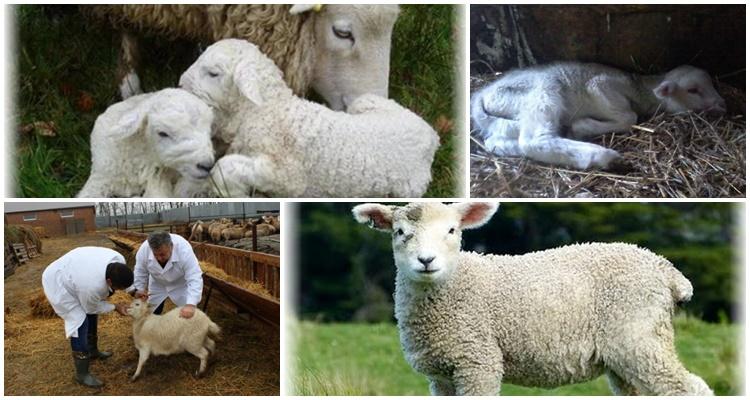
Enterotoxemia
Pathology is a toxic infection that provokes damage to the nervous system. The disease quickly leads to the death of the lamb. It is caused by spore-forming anaerobes. When ingested, they produce toxins that enter the bloodstream. The disease can spread between animals. Pathogens often enter the body from pastures. Outbreaks usually occur in the spring. Pathology has 3 options for development:
- lightning-fast - the death of the lamb occurs in 10-12 hours;
- acute - the pathology lasts about a day;
- chronic - causes weakness, diarrhea, anemia.
With helminthiasis
This group includes many diseases that are caused by the ingestion of parasitic worms. They all cause indigestion. The most common pathologies include:
- Helminthiases are caused by damage by worms from the class of leaf-shaped flukes. They cause paramphistomatosis, fascilosis, dicroceliosis.
- Cestodes - These are caused by tapeworms called cestodes. They provoke the development of moniesiasis and coenurosis.
- Nematodes - this group of pathologies is provoked by round worms, which are called nematodes.
With fascioliasis
This disease is provoked by parasitic trematodes. They cause damage to the bile ducts of the liver. Infection usually occurs with food and water. Pathology can develop for 3-4 months. At the same time, it causes stool disturbances, impaired appetite, anemia, and fever. In the absence of timely therapy, there is a risk of death of the lamb.
Echinococcosis
This term is understood as a parasitic chronic pathology. It is caused by echinococcus, which is considered the most dangerous parasite. Infection is carried out with water and grass. Also, the development of the disease is possible if the rules of hygiene in farms are violated.
Colored diarrhea
This pathology is dangerous only for newborn babies. It occurs immediately after birth or after 3-5 days. Despite the name, the stool has a transparent consistency. Therefore, it is not always possible to identify the disease in time.
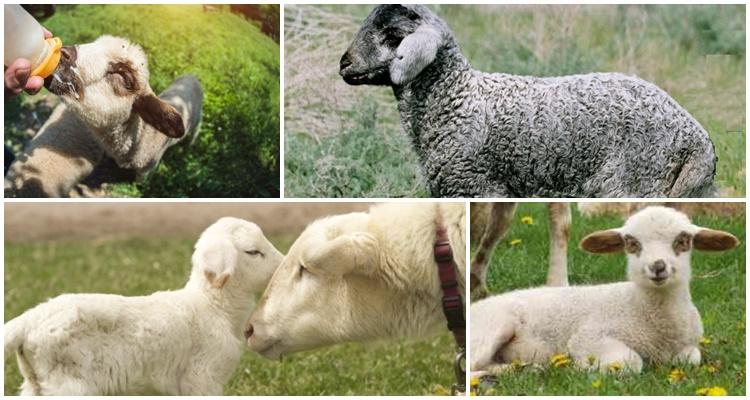
In addition to diarrhea, the baby has severe weakness, loss of appetite. The disease leads to dehydration. To avoid pathology, it is important to vaccinate a pregnant female 3-4 weeks before giving birth. At the initial stage, the pathology can be eliminated with the help of complex therapy. Even with a slight suspicion of the development of the disease, it is recommended to isolate the lamb, provide it with a favorable temperature and constantly ventilate the room.
Associated symptoms
The clinical picture usually depends on the diagnosis. In this case, diarrhea is often accompanied by symptoms of dyspepsia, especially if the baby is bottle-fed. Most often, diarrhea in lambs provokes the following symptoms:
- general weakness and lethargy;
- loss of appetite;
- weight loss;
- the appearance of bloody impurities in the feces;
- rapid dehydration.
Diagnostic methods
With timely detection, most pathologies can be cured. In this case, it is important to carry out diagnostics on time. Therefore, if you suspect a deterioration in the lamb's condition, it is recommended to contact the veterinary service.
After a preliminary examination, the doctor will order laboratory tests. This will help you understand the causes of your symptoms and help you choose a treatment.
Treatment for diarrhea in sheep
When diarrhea occurs, treatment can be different - it all depends on the specific diagnosis and the age of the animal.
In an adult
Therapeutic measures depend on the diagnosis:
- With enterotoxemia, therapy gives results only in the initial stages. In this case, the sheep need to inject hyperimmune serum. This is recommended in combination with antibiotics. Complex cases of pathology are not amenable to therapy.
- With helminthiasis, treatment is prescribed depending on the parasite that provoked the disease. When infected with nematodes, "Ivermectin" is prescribed. Albendazole helps to cope with tape or round helminths. With fascioliasis, you need to give "Hexyhol", "Acemidophen". The dosage should be adjusted by the veterinarian. In this case, the sick animal must be isolated.
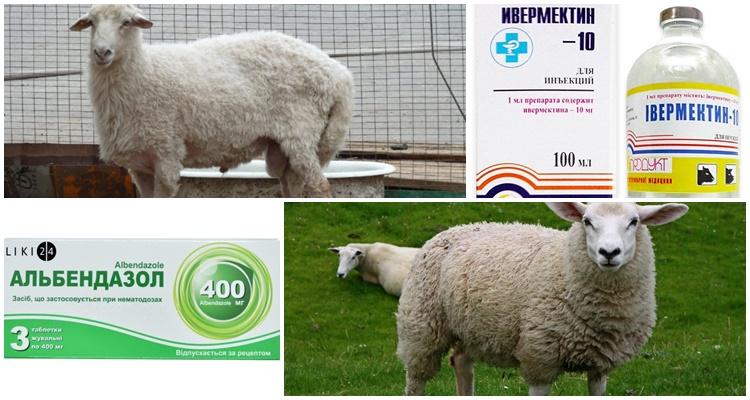
Young animals
Young animals usually suffer from the same pathologies as adult animals. Therefore, the only difference in treatment is the dosage of the drugs. As a rule, the volume of drugs is calculated depending on the body weight.
Lambs
Lambs often face specific diseases. Therefore, treatment methods are different:
- For anaerobic dysentery, it is recommended to inject hyperimmune serum intramuscularly. "Syntomycin" can also be used. In addition, antibiotics or sulfonamides help to cure the pathology.
- Colored diarrhea requires complex therapy. First, the baby should be given a warm electrolyte solution. This will help support his body before the antibacterial drugs begin to work. The solution is recommended to be administered daily at intervals of 6 hours. At the same time, antibiotics are prescribed - "Gentamicin", "Spectomycin", "Nifuraldezon". It is recommended to enter them every 2 hours.
If the appearance of diarrhea in a cub is not associated with a serious pathology, it is permissible to use folk remedies. A decoction of oak bark or strong tea is suitable for this. You can also use the drug "Zinaprim". To do this, a pinch of the substance must be poured onto the animal's tongue. This should be done 2-3 times.
Possible consequences
Diarrhea in lambs is considered a rather dangerous condition. In the absence of timely assistance, it quickly provokes dehydration of animals. With the development of serious diseases, the probability of death of the lamb is high.
Prevention
To avoid diarrhea in pups, it is important to properly feed and maintain pregnant sheep. Compliance with the rules of lamb hygiene is of no small importance. You also need to strictly adhere to the recommendations for raising young animals.
Before lambing, the sheep should be given concentrated feed. They also need vitamins and minerals. Before lambing, the room must be cleaned and disinfected. It is recommended to sanitize the udder before lambing.
Diarrhea in lambs can be the result of a variety of pathologies. There are many dangerous conditions that can provoke the death of young. To avoid this, it is important to pay special attention to prevention. If the symptoms of diarrhea still appear, you need to consult a veterinarian.
